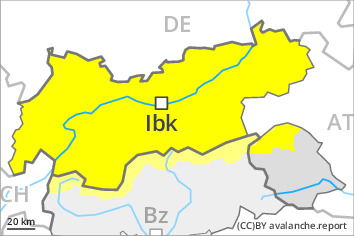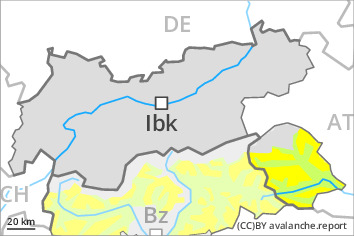
Danger level
 | 2200m |
|  |
|  | ||||
|  |
|  |

Wind slabs and gliding snow require caution.
As a consequence of the strong wind, fresh snow drift accumulations will form. These are prone to triggering at elevated altitudes. Caution is to be exercised in particular adjacent to ridgelines in gullies and bowls, and behind abrupt changes in the terrain above approximately 2200 m. The number and size of avalanche prone locations will increase with altitude. These avalanche prone locations are easy to recognise.
In addition a moderate (level 2) danger of gliding avalanches exists, in particular on steep east, south and west facing slopes below approximately 2600 m. Gliding avalanches can be released at any time of day or night. Caution is to be exercised in areas with glide cracks.
Snowpack
dp.6: cold, loose snow and wind
dp.2: gliding snow
Little snow will fall in some localities. Over a wide area 5 to 20 cm of snow fell on Sunday above approximately 1000 m. In the Venediger Range up to 30 cm of snow fell on Sunday above approximately 1000 m. The wind will be moderate to strong in some regions. The fresh wind slabs are lying on soft layers at elevated altitudes. The fresh wind slabs can in some cases be released easily.
The new snow is lying on a crust in all aspects below approximately 2600 m. Low and intermediate altitudes: The old snowpack is fairly homogeneous and its surface has a melt-freeze crust that is strong in many cases. This also applies on steep sunny slopes at high altitude.
The old snowpack will be stable over a wide area.
Tendency
Fresh wind slabs require caution.
A latent danger of gliding avalanches exists.



